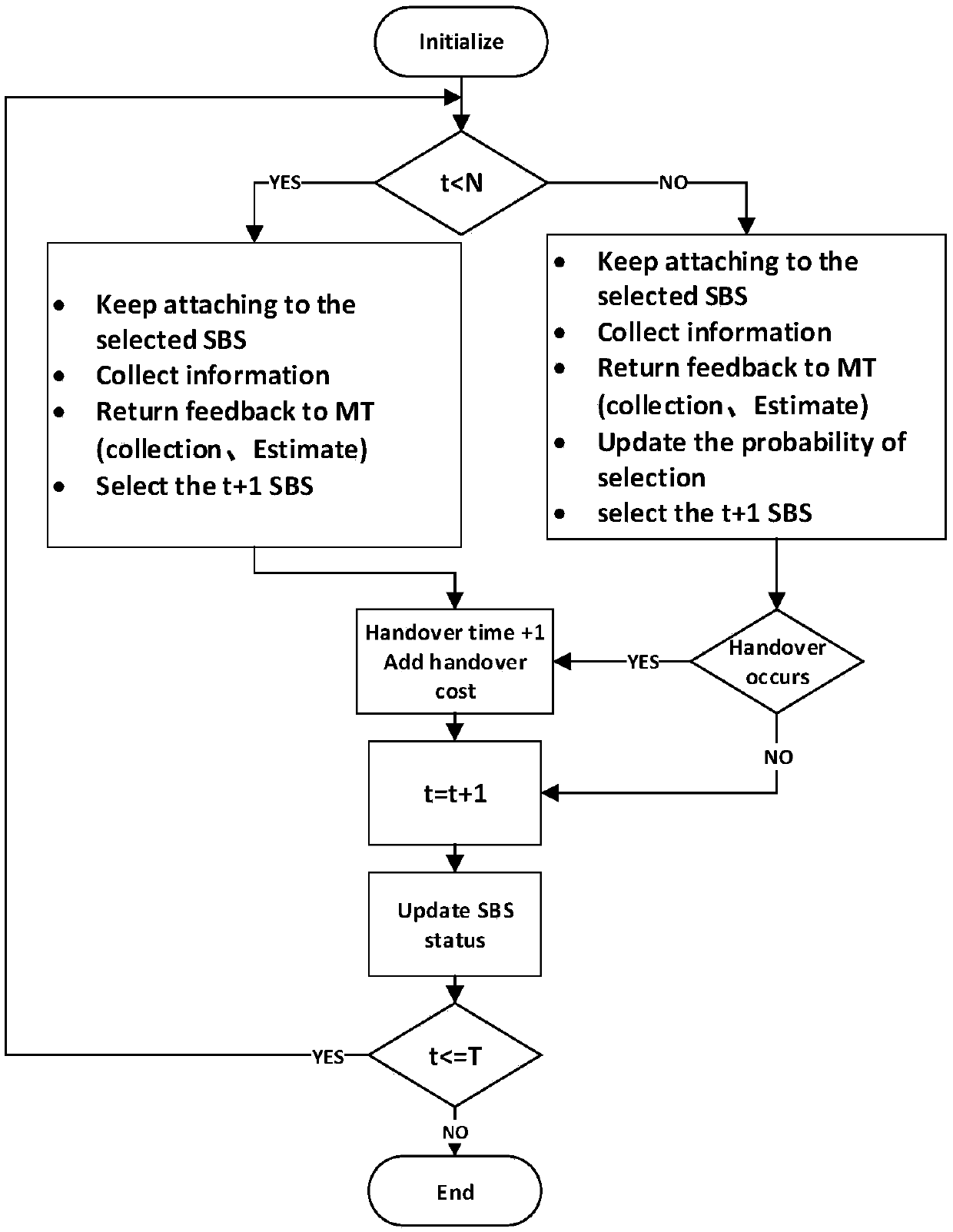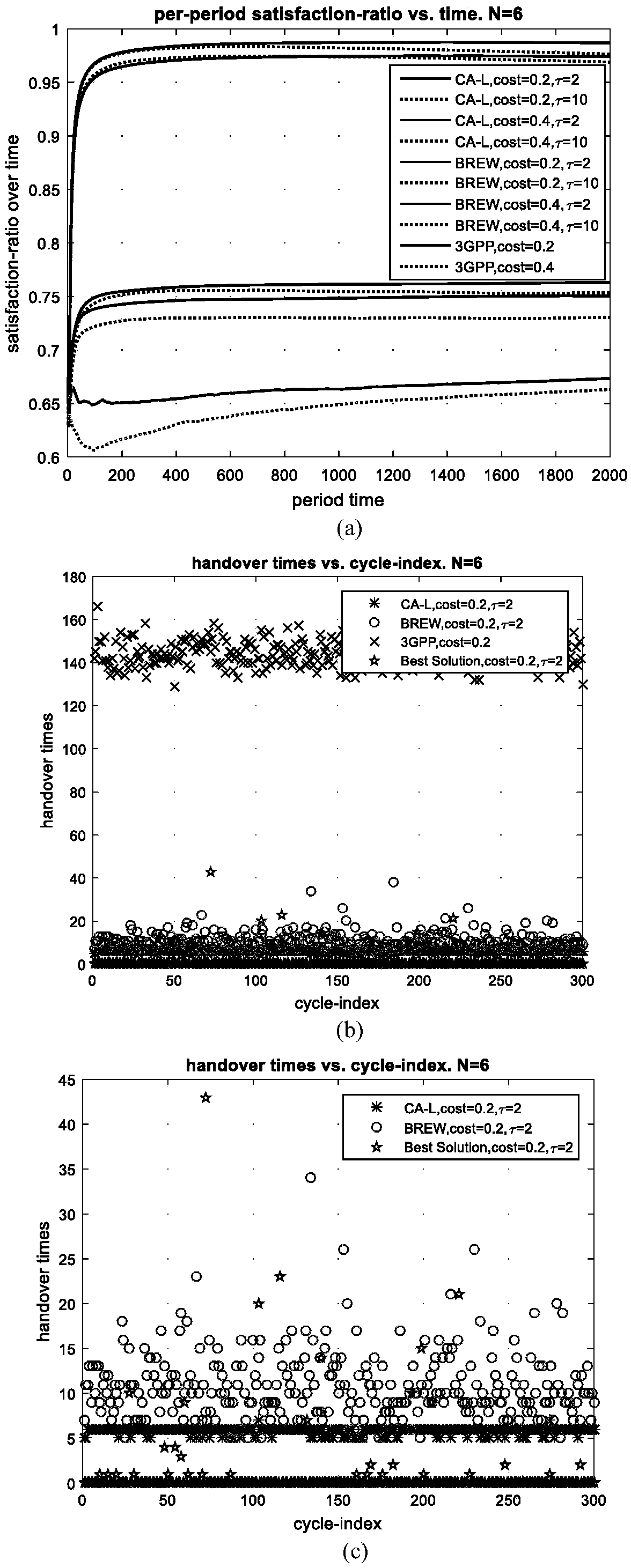Multi-objective mobility management method based on contextual awareness
A technology of environmental perception and management method, applied in the field of mobile communication network, can solve the problems of high algorithm complexity, frequent switching, single optimization content, etc.
- Summary
- Abstract
- Description
- Claims
- Application Information
AI Technical Summary
Problems solved by technology
Method used
Image
Examples
Embodiment Construction
[0053] For the mobility management problem in the ultra-dense network, the present invention proposes an environment-aware multi-objective mobility management method. An improved non-stochastic learning model is proposed to collect the dynamic environment competition scores of small base stations to decide the sequence of switching base stations. And the concept of switching loss is introduced, the occurrence of switching is strictly controlled, the switching frequency is reduced, and the problem of frequent switching in ultra-dense networks is solved. Finally, the user satisfaction parameter and the number of switching times evaluate the quality of the base station selection scheme. Simulations demonstrate that the proposed algorithm works both in the ideal case of no delay and packet loss and in the presence of feedback delay or packet loss.
[0054] The invention adopts a multi-objective non-random learning model with known environment to solve the problem of mobility manag...
PUM
 Login to View More
Login to View More Abstract
Description
Claims
Application Information
 Login to View More
Login to View More - R&D
- Intellectual Property
- Life Sciences
- Materials
- Tech Scout
- Unparalleled Data Quality
- Higher Quality Content
- 60% Fewer Hallucinations
Browse by: Latest US Patents, China's latest patents, Technical Efficacy Thesaurus, Application Domain, Technology Topic, Popular Technical Reports.
© 2025 PatSnap. All rights reserved.Legal|Privacy policy|Modern Slavery Act Transparency Statement|Sitemap|About US| Contact US: help@patsnap.com



